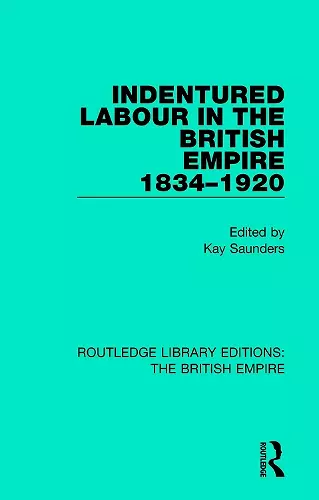Indentured Labour in the British Empire, 1834-1920
Format:Paperback
Publisher:Taylor & Francis Inc
Published:17th Sep '19
Currently unavailable, and unfortunately no date known when it will be back
This paperback is available in another edition too:
- Hardback£130.00(9780815359449)

First published in 1984. Indentured labour migration in the nineteenth century intersects many of the most serious issues of our own time - racism, Third World poverty, and the arrogance of a great world powers. Indenture suggests lack of freedom and the exploitation of people formed into exile or misadventure. Coming as it did after the abolition of slavery in the British Empire in 1834, in many respects it can be regarded as a replacement of the slave labour system. Indeed, both concerned humanitarians and officials in the nineteenth century, and many historians subsequently have regarded indentured labour merely as 'a new system of slavery'.
Many of the articles in this book address themselves to this assertion, whilst investigating the particular variations inherent in their geographic area. The differing patterns of Indian indenture in the West Indies and British Guiana, coming almost immediately after slavery, forms the first section of this book. Attention is given to the Indians engaged in the sugar industries in Mauritius and Fiji, and the rubber industry in Malaya. The use of Pacific Islanders in the Queensland industry is also examined, particularly in the sugar industry which, by the early twentieth century, contained the unique pattern of white, expensive, unionized labour. Other groups dealt with include the aboriginal workers in Australia and the Chinese workers in the Transvaal.
Overall, this book is comprehensive and far-reaching in its scope and the complex issues which it raises.
ISBN: 9780815359463
Dimensions: unknown
Weight: 640g
348 pages